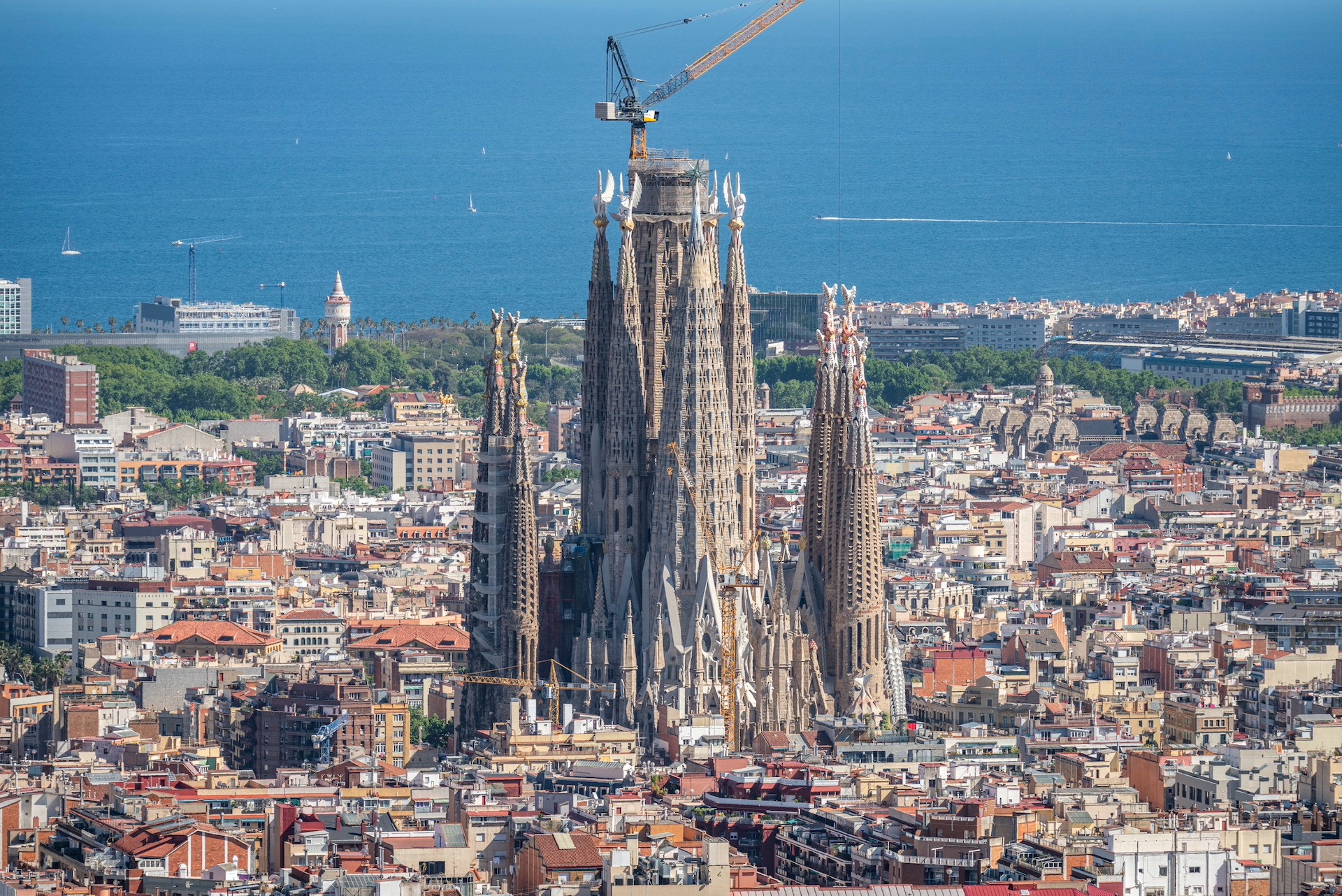The Basílica de la Sagrada Família (Sagrada Família for short) is an architectural masterpiece, functional church, and popular tourist attraction located in Barcelona. In 2005 it was even made a World Heritage Site by UNESCO, demonstrating its significance as a design. Yet perhaps the most interesting thing about the Sagrada Família is the fact that it hasn’t even been completed yet!
Indeed, the Sagrada Família has been a work in progress for over a hundred years. Construction began in 1882, based on the plans of Francisco de Paula del Villar. Only a year later, Paula del Villar resigned and Antoni Gaudí took over the project. Gaudí is the one who would go down in history as the creator of the church.
Gaudí worked on the church until his death in 1926. Construction continued, but was disrupted during the Spanish Civil War in the 1930s. Even more than disrupted, the Sagrada Família was vandalized. Components of the building were destroyed, and the original Gaudí plans were burned.
After the war, the Sagrada Família project resumed. Efforts have continued to this day to complete the church, although it still remains unfinished today. Yet, it has received recognition for its grand presence and story, as well as for its beautiful design.
The Sagrada Família is impressive, complex, and has an even more vivid history than summarized above. It is truly a worthy site to visit and to learn more about.

Image courtesy of the Sagrada Família official website’s photo gallery.
Sources Used
Art in Context. “Sagrada Família in Barcelona – Gaudí’s Unfinished Masterpiece.” Last modified September 12, 2023. https://artincontext.org/sagrada-familia-in-barcelona/.
Sagrada Família. “History of the Temple.” https://sagradafamilia.org/en/history-of-the-temple/.

